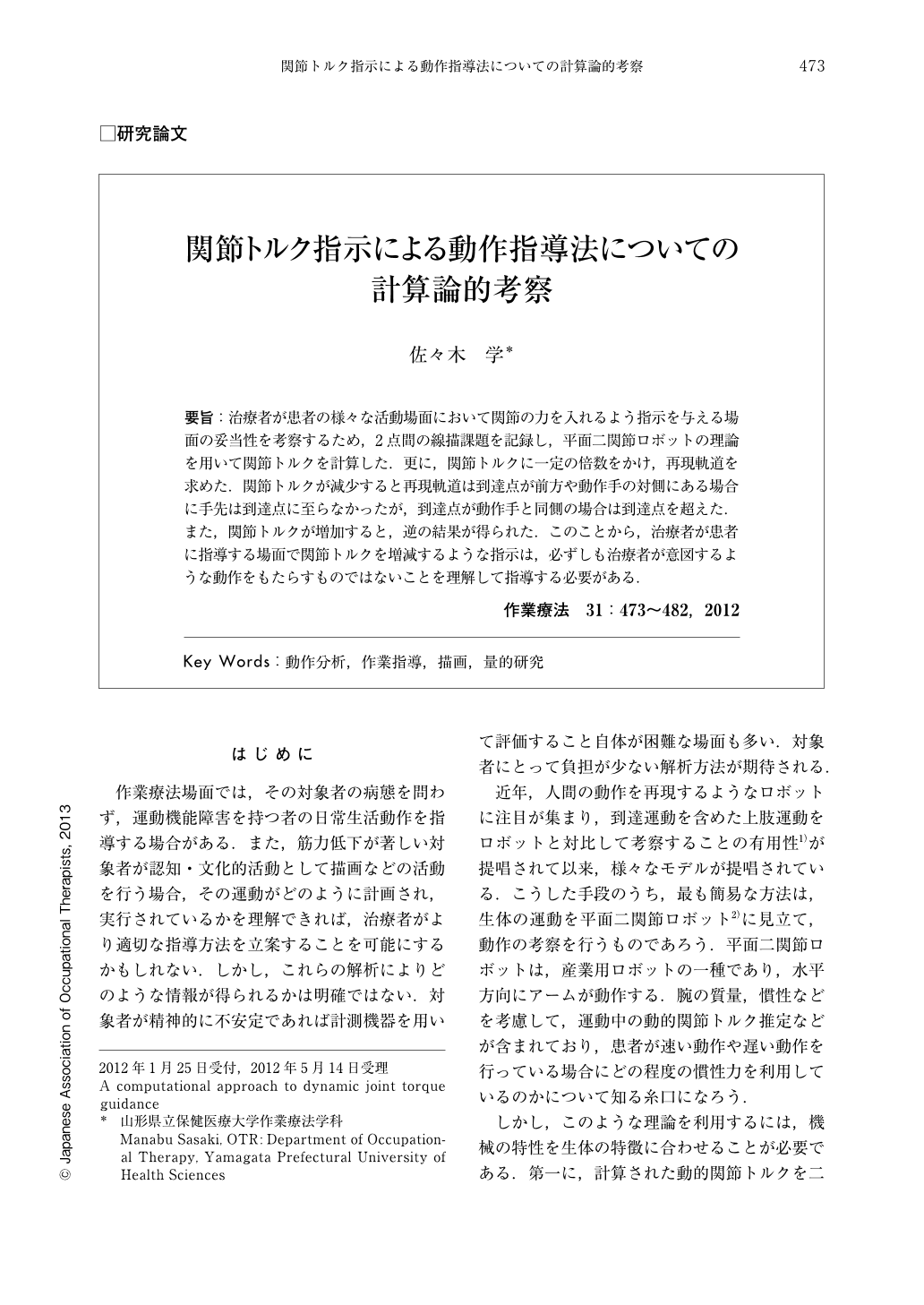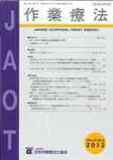Japanese
English
- 販売していません
- Abstract 文献概要
- 1ページ目 Look Inside
- 参考文献 Reference
要旨:治療者が患者の様々な活動場面において関節の力を入れるよう指示を与える場面の妥当性を考察するため,2点間の線描課題を記録し,平面二関節ロボットの理論を用いて関節トルクを計算した.更に,関節トルクに一定の倍数をかけ,再現軌道を求めた.関節トルクが減少すると再現軌道は到達点が前方や動作手の対側にある場合に手先は到達点に至らなかったが,到達点が動作手と同側の場合は到達点を超えた.また,関節トルクが増加すると,逆の結果が得られた.このことから,治療者が患者に指導する場面で関節トルクを増減するような指示は,必ずしも治療者が意図するような動作をもたらすものではないことを理解して指導する必要がある.
In order to determine the effect of the therapist's instructions on patient performance when generating joint torque, I calculated the dynamic joint torques through application of the two-joint Selective Compliance Assembly Robot Arm theory for tracking data in a drawing.
Sample data were recorded in three randomly selected conditions: The subject drew the line from the proximal light point to the distal location; the distal point was moved to the left suddenly when the hand passed through the center of the two light points; and the distal point was moved to the right.
Using the data, I calculated the reproduced trajectory using the original dynamic torque data. The results demonstrated that the trajectory overshot the target point with the higher torque ratio when the target moved toward adduction, as well as in the non-moving distal point condition; however, it undershot the target with the higher torque ratio when the target was moved toward abduction.
This indicates a possibility that patient performance varies with the requirements of the task regardless of the therapist's instructions.

Copyright © 2012, Japanese Association of Occupational Therapists. All rights reserved.


